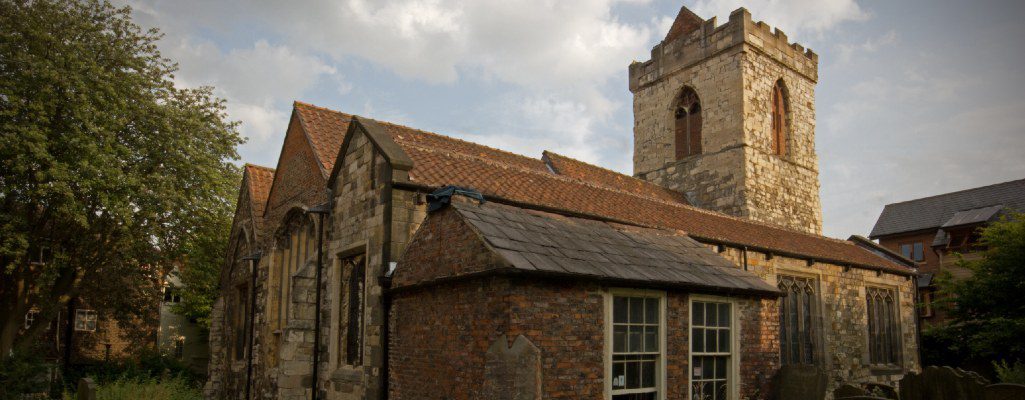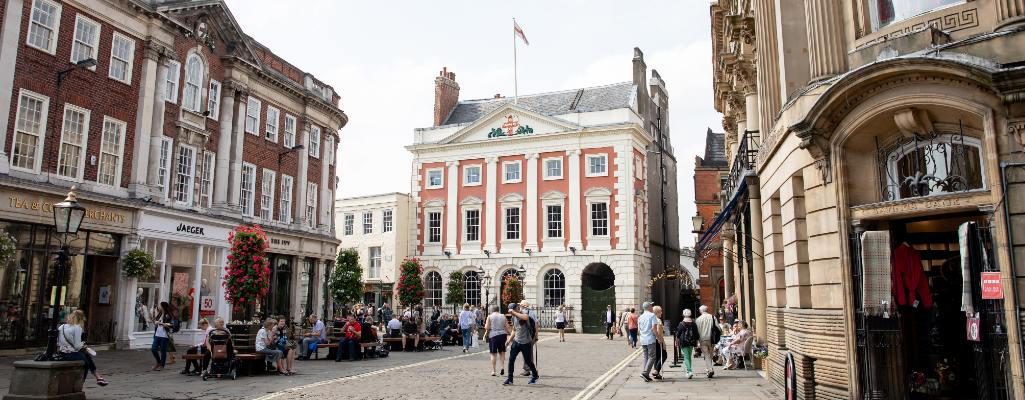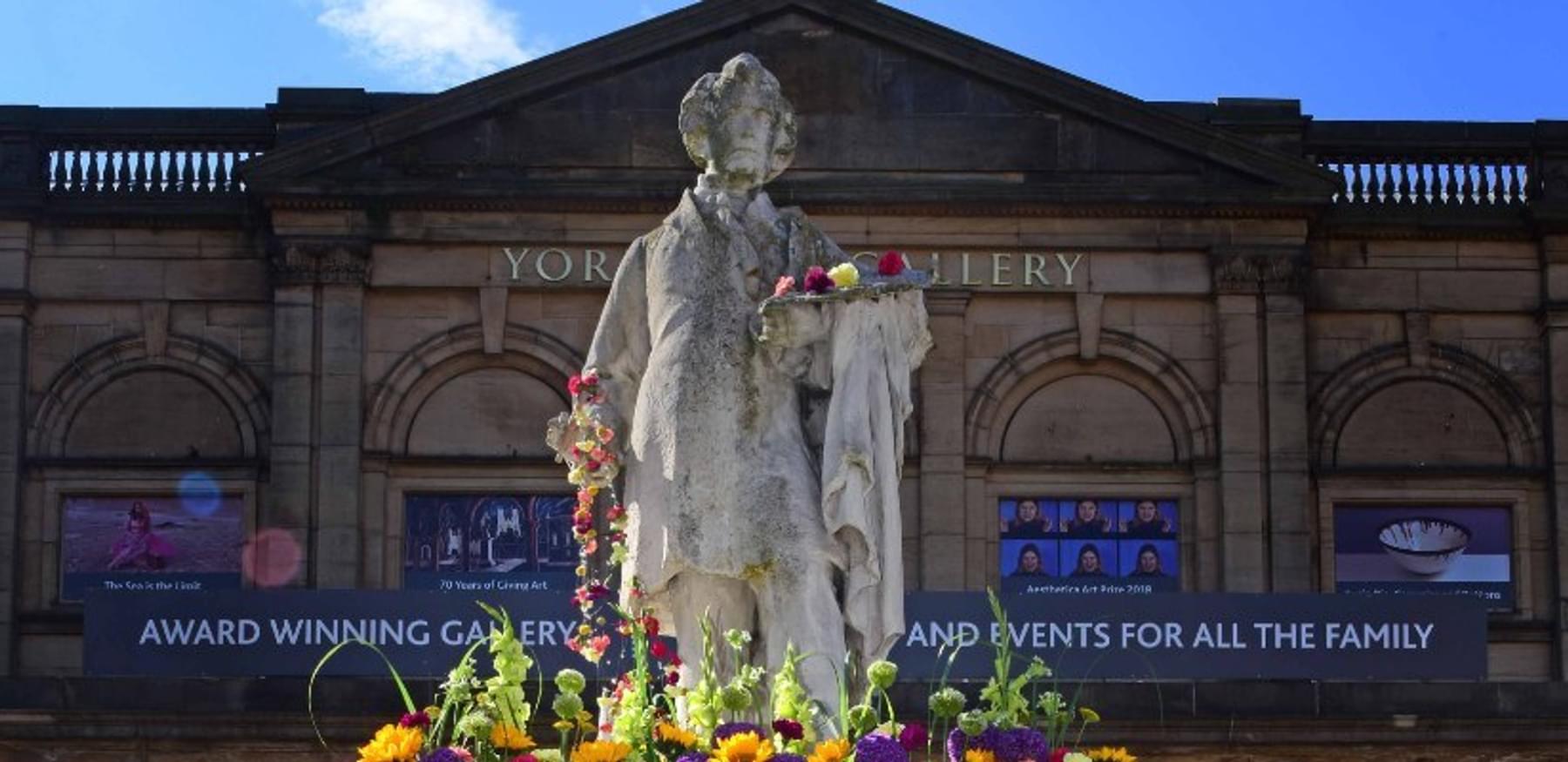This August we’re inviting you to celebrate the best of York. Take some time to learn more about our city’s history, achievement and more, and discover all the hidden treasures which make it so unique. In this week’s blog we’re focusing on some of York’s historical characters, and where in the city you can go to find a connection with their story.
William Etty 1787-1849
William Etty was a York born painter, famous for his history paintings containing nudes. He is one of few figures in York to have a statue put up to commemorate him, which was erected in front of York Art Gallery in Exhibition Square, 1911. Etty was born above his father’s bakery shop. A stone inscription can be found marking the location on Feasegate. Etty moved to London for his training and his first big success was his 1821 painting, The Triumph of Cleopatra.
Etty maintained a close connection with his birthplace, and was an early conservationist for some of York’s most famous landmarks. An 1829 arsonist’s fire cause a great deal of damage to the interior of York Minster and plans were drawn up to fully destroy and restructure the inside of the building. Etty was a key figure in the successful campaign against this, and instead the Minster was restored to its original interior.
Throughout Etty’s life various plans and schemes were put in place to erase York’s medieval walls, which, despite their attractiveness, were at the time a hinderance to economic opportunity and safety. He protested against plans to demolish the bars; the bars were saved but not before all their barbicans had been destroyed. He vigorously protested against archways being cut into the walls to allow access to locomotives. In this he was unsuccessful, and trains were able to pass through the walls to the old railway station, now the site of City of York Council offices. You can see the path the trains took by walking the walls from Micklegate to Lendal Bridge.
His other contribution to York was the pivotal role he played in setting up an art school in York so that future talent didn’t have to travel elsewhere for training. Etty wished to be buried in York Minster but failed to leave the required funds in his will. Instead he was buried in the church yard of St Olaves, and his grave can be seen from Museum Gardens.
Anne Lister 1791-1840
Anne Lister, or Gentleman Jack as she was also known, was a wealthy Yorkshire landowner and business woman in the early 19th century, who had a series of romantic, and sometimes public, relationships with other women. Anne was originally from Halifax in West Yorkshire, but at the time York was the centre of Yorkshire society, and Anne spent a considerable amount of time here, including some key life moments. Anne’s self-assuredness and lifestyle, as gleamed from her extensive secret-coded diaries, have led her to often be referred to as the first modern lesbian.
In 1804 Anne came to study in York at the Manor House School, set in the buildings of Kings Manor, now a University of York building which can be seen from Exhibition Square. It was here that Anne had her first intense relationship with fellow student Eliza Raines, the daughter of an East India Company surgeon. Eliza was devoted to Anne, but Anne ended up pursuing affairs with other girls.

Later in life, in 1832, Anne began a relationship with Ann Walker, another landowner who in 1834, moved into Anne Lister’s home where the two lived openly as a couple. They were treated with suspicion in Halifax, but found their York friends to be more tolerant. During a visit to the city the two women took communion together at Holy Trinity Church on Goodramgate, after having exchanged rings and vows, which they took to be a bond of their union.
Much of the recent BBC Two series Gentleman Jack, which dramatises the life of Anne Lister, was filmed in York and you can see where you can visit filming locations in another of our blogs.
George Hudson 1800-1871
George Hudson M.P., a.k.a. The Railway King, was a three-time Lord Mayor of York, whose career in the railways saw him become one of the wealthiest people in the country, but ended in financial disaster.
The son of farmers, in his early life he became apprenticed to successful drapers Bell & Nicholson, which operated out of the building now occupied by the National Trust gift shop on Goodramgate. He went on to marry one of the owners’ daughters and took over the running of the company. The success of this company, coupled with a sizeable inheritance from his great-uncle, gave Hudson the means to start investing in various engineering works. The inheritance also included a grand Georgian townhouse on Monkgate where Hudson then lived, marked today by a plaque.

He began his involvement in the railways in 1833 by entering into a scheme to put a railway line between York and Leeds, and over the next decade rapidly grew his railway empire. By 1844 he controlled more than 1000 miles of railway. It wasn’t just the through the railways that Hudson left his mark on York. He also, despite considerable opposition, oversaw the constructions of one the Ouse’s main crossings, Lendal Bridge. One of the keys to his success was his involvement in both national and local politics. He first became Lord Mayor of York in 1837, and served three times.
In the late 1840s the railway bubble burst, exposing Hudson’s dubious financial position and practices, which included selling land he did not own. He had vast debts, but as M.P. for Sunderland he couldn’t be prosecuted for them. He fled to France, and lost his seat in 1859. He came back in 1865 to stand for Whitby, but was arrested, tried in York and thrown into prison for three months. You can find out more about the history of the railways by visiting the National Railway Museum.
When spending time in York we ask that you be considerate and observe social distancing to allow yourself and others to enjoy the city safely.
More Blogs
You may also like

Jools Holland and his Rhythm and Blues Orchestra

Kate Rusby
York Barbican










